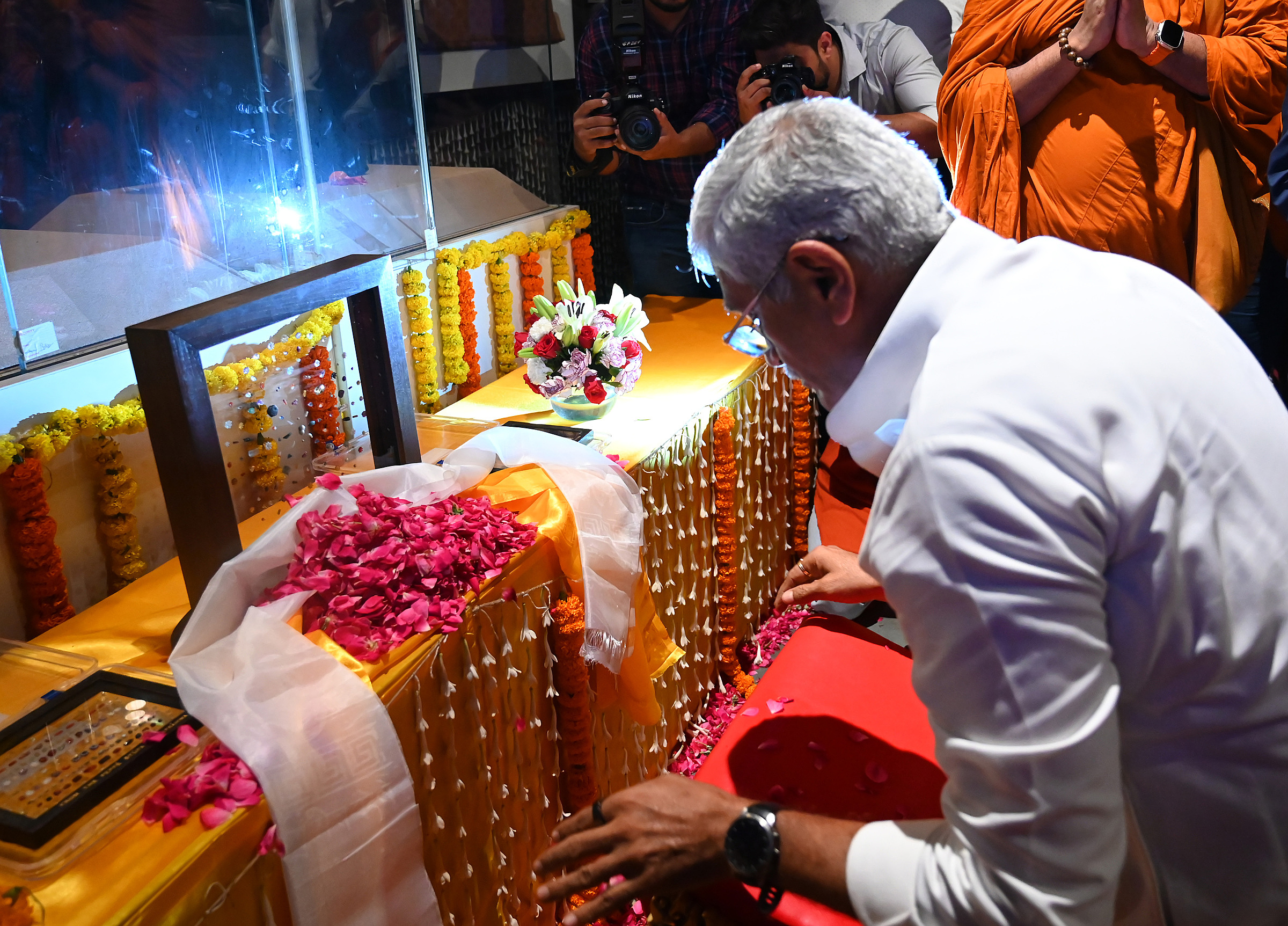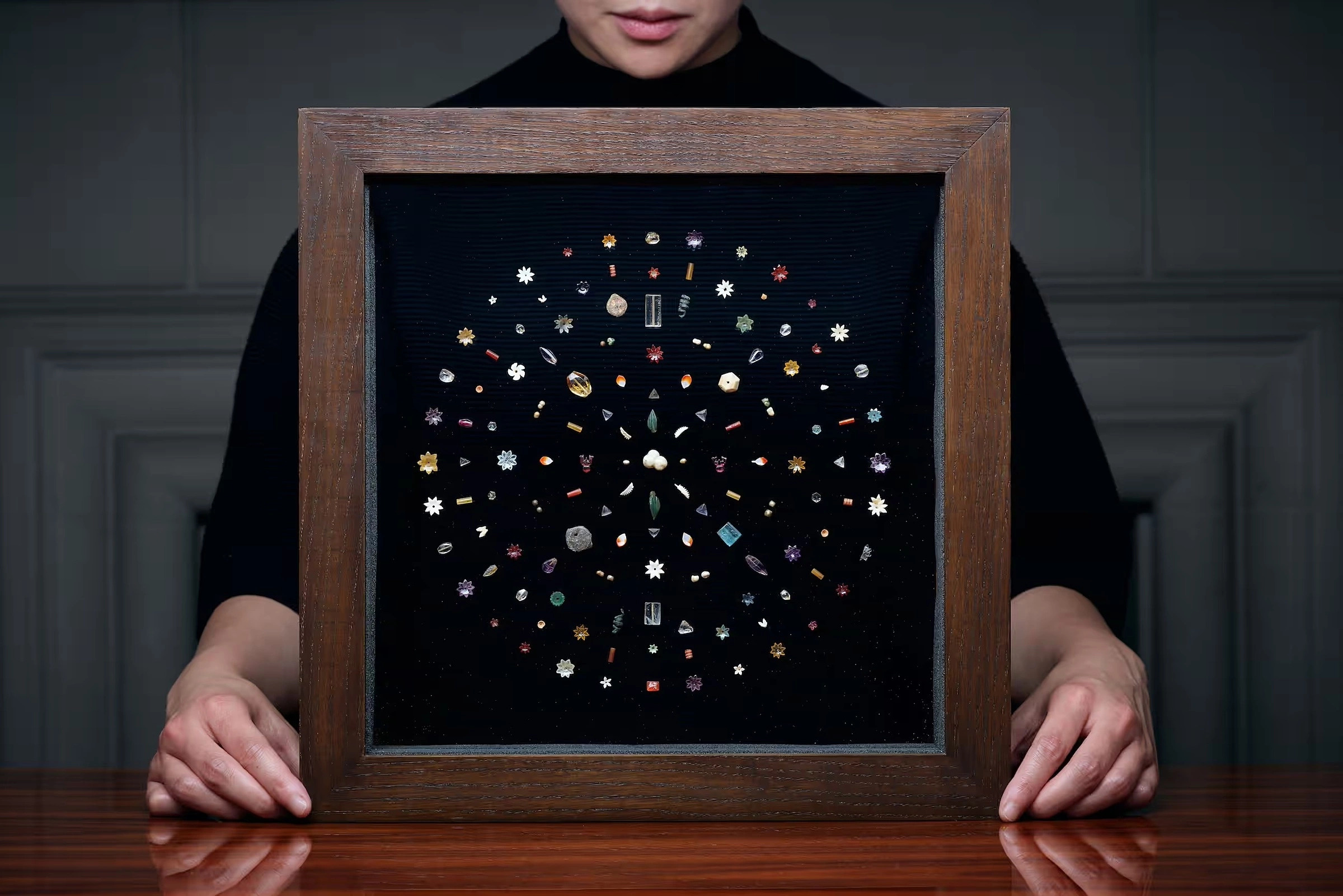"A joyous day for our cultural heritage," Indian Prime Minister Narendra Modi posted on X on 30/7, as the country received the artifacts. "This is a matter of pride for every Indian."
The relics, including amethyst, quartz, pearls, coral, garnet, and gold, were excavated in 1898 by British estate manager William Clasxton Peppe from an ancient stupa on his property in Piprahwa, Uttar Pradesh, northern India.
 |
Indian Culture Minister Gajendra Singh Shekhawat places flowers before the collection of Buddhist gemstones in New Delhi on 30/7. Photo: Reuters |
Indian Culture Minister Gajendra Singh Shekhawat places flowers before the collection of Buddhist gemstones in New Delhi on 30/7. Photo: Reuters
They were discovered alongside ashes and bones believed to be those of Buddha. Chris Peppe, a descendant of William Clasxton Peppe, later decided to consign the treasures to Sotheby's, the British auction house.
Chris Peppe explained that his family had considered donating the artifacts to temples and museums but encountered several obstacles. He believed that auctioning them was "the fairest and most transparent way" to transfer the relics to the Buddhist community.
Sotheby's described the items as "Buddha's Piprahwa jewels, of the Maurya empire, Ashoka period, circa 240-200 BC".
New Delhi sent a legal notice requesting Sotheby's to cancel the auction and return the gemstones to India for preservation and religious purposes.
Sotheby's later confirmed that India's Godrej Industries Group was the buyer and finalized the deal, ensuring the collection's permanent return to India. The purchase price was not disclosed.
The auction house had previously estimated the collection would sell for around 100 million Hong Kong dollars (over 12.9 million USD) in the auction scheduled for 7/5.
 |
Buddha's Piprahwa jewel collection. Photo: Sotheby's |
Buddha's Piprahwa jewel collection. Photo: Sotheby's
"Sotheby's is honored to have facilitated the return of the gemstones to India", the auction house said in a statement on 30/7.
The Indian Ministry of Culture called this achievement a model of public-private partnership and stated that this initiative is part of its "mission to restore and honor" India's ancient cultural and spiritual heritage worldwide.
Duc Trung (Reuters, Hindustan Times)












